|
Ever since I was a little kid, I have loved Midnight Mass. As a student of the Church's liturgy, some of the externals certainly contribute to this: darkness, incense, singing, a full church. Yesterday was no different. The outside air was cold, the church full, the music beautiful as always. With the exception of a blaring fire alarm because of of a smoking thurible being placed too close to a sensitive smoke detector, Mass went off without a hitch!
But why do we gather in the middle of the night on one of the longest nights of the year? Why do we celebrate this great solemnity year after year? What can we continue to learn from "Jesus Christ, eternal God and Son of the eternal Father...born in Bethlehem of Judea of the Virgin Mary" (Proclamation of the Birth of Christ)? The collect (opening prayer) from the "Mass during the Night" beautifully illustrates the reason that we gather on that holy night: O God, who have made this most sacred night radiant with the splendor of the true light, grant, we pray, that we, who have known the mysteries of his light on earth, may also delight in his gladness in heaven. God's light came to earth as an infant over two thousand years ago. The Incarnation is miracle and pure gift, but it is also human. "Et Verbum caro factum est et habitavit in nobis—And the Word became flesh and dwelt among us." The Word, Christ himself, was, as the Nicene Creed says, "incarnate of the Virgin Mary and became man." In his Midnight Mass homily, Pope Francis said, "The grace which was revealed in our world is Jesus, born of the Virgin Mary, true man and true God. He has entered our history; he has shared our journey." Emmanuel, God with us, was born in a manger fully human and fully God. Jesus Christ is not some distant, historical figure. He experienced the joys and sorrows of daily living just as we do today, and is as alive today as he was in Bethlehem two thousand years ago. As we celebrate the octave of Christmas, let us not forget the great miracle of the Incarnation of the light of the world. "The Word became flesh, and we have seen his glory" (John 1:14). May the glory and joy of Christmas remain alive in our hearts and in our lives today and every day. Alex R. Boucher is the Program & Operations Manager for the Catholic Apostolate Center. Follow Alex on Twitter at @AlexBoucher.
2 Comments
11/24/2013 Holy Mass for the Conclusion of the Year of Faith on the Solemnity of Our Lord Jesus Christ, King of the UniverseRead NowHomily of Pope Francis
Saint Peter's Square Sunday, 24 November 2013 Today’s solemnity of Our Lord Jesus Christ, King of the Universe, the crowning of the liturgical year, also marks the conclusion of the Year of Faith opened by Pope Benedict XVI, to whom our thoughts now turn with affection and gratitude for this gift which he has given us. By this providential initiative, he gave us an opportunity to rediscover the beauty of the journey of faith begun on the day of our Baptism, which made us children of God and brothers and sisters in the Church. A journey which has as its ultimate end our full encounter with God, and throughout which the Holy Spirit purifies us, lifts us up and sanctifies us, so that we may enter into the happiness for which our hearts long. I offer a cordial and fraternal greeting to the Patriarchs and Major Archbishops of the Eastern Catholic Churches present. The exchange of peace which I will share with them is above all a sign of the appreciation of the Bishop of Rome for these communities which have confessed the name of Christ with exemplary faithfulness, often at a high price. With this gesture, through them, I would like to reach all those Christians living in the Holy Land, in Syria and in the entire East, and obtain for them the gift of peace and concord. The Scripture readings proclaimed to us have as their common theme the centrality of Christ. Christ is at the centre, Christ is the centre. Christ is the centre of creation, Christ is the centre of his people and Christ is the centre of history. 1. The apostle Paul, in the second reading, taken from the letter to the Colossians, offers us a profound vision of the centrality of Jesus. He presents Christ to us as the first-born of all creation: in him, through him and for him all things were created. He is the centre of all things, he is the beginning: Jesus Christ, the Lord. God has given him the fullness, the totality, so that in him all things might be reconciled (cf. Col 1:12-20). He is the Lord of creation, he is the Lord of reconciliation. This image enables to see that Jesus is the centre of creation; and so the attitude demanded of us as true believers is that of recognizing and accepting in our lives the centrality of Jesus Christ, in our thoughts, in our words and in our works. And so our thoughts will be Christian thoughts, thoughts of Christ. Our works will be Christian works, works of Christ; and our words will be Christian words, words of Christ. But when this centre is lost, when it is replaced by something else, only harm can result for everything around us and for ourselves. 2. Besides being the centre of creation and the centre of reconciliation, Christ is the centre of the people of God. Today, he is here in our midst. He is here right now in his word, and he will be here on the altar, alive and present amid us, his people. We see this in the first reading which describes the time when the tribes of Israel came to look for David and anointed him king of Israel before the Lord (cf. 2 Sam 5:1-3). In searching for an ideal king, the people were seeking God himself: a God who would be close to them, who would accompany them on their journey, who would be a brother to them. Christ, the descendant of King David, is really the “brother” around whom God’s people come together. It is he who cares for his people, for all of us, even at the price of his life. In him we are all one, one people, united with him and sharing a single journey, a single destiny. Only in him, in him as the centre, do we receive our identity as a people. 3. Finally, Christ is the centre of the history of humanity and also the centre of the history of every individual. To him we can bring the joys and the hopes, the sorrows and troubles which are part of our lives. When Jesus is the centre, light shines even amid the darkest times of our lives; he gives us hope, as he does to the good thief in today’s Gospel. Whereas all the others treat Jesus with disdain – “If you are the Christ, the Messiah King, save yourself by coming down from the cross!” – the thief who went astray in his life but now repents, clings to the crucified Jesus and begs him: “Remember me, when you come into your kingdom” (Lk 23:42). Jesus promises him: “Today you will be with me in paradise” (v. 43), in his kingdom. Jesus speaks only a word of forgiveness, not of condemnation; whenever anyone finds the courage to ask for this forgiveness, the Lord does not let such a petition go unheard. Today we can all think of our own history, our own journey. Each of us has his or her own history: we think of our mistakes, our sins, our good times and our bleak times. We would do well, each one of us, on this day, to think about our own personal history, to look at Jesus and to keep telling him, sincerely and quietly: “Remember me, Lord, now that you are in your kingdom! Jesus, remember me, because I want to be good, but I just don’t have the strength: I am a sinner, I am a sinner. But remember me, Jesus! You can remember me because you are at the centre, you are truly in your kingdom!” How beautiful this is! Let us all do this today, each one of us in his or her own heart, again and again. “Remember me, Lord, you who are at the centre, you who are in your kingdom”. Jesus’ promise to the good thief gives us great hope: it tells us that God’s grace is always greater than the prayer which sought it. The Lord always grants more, he is so generous, he always gives more than what he has been asked: you ask him to remember you, and he brings you into his kingdom! Let us ask the Lord to remember us, in the certainty that by his mercy we will be able to share his glory in paradise. Let us go forward together on this road! Amen! As I sit here in an airport restaurant in Indianapolis on Sunday morning, the sun is just starting to rise over the tarmac. I have been here for the National Catholic Collegiate Conference (NC3) and the National Catholic Youth Conference (NCYC) with other members of the Catholic Apostolate Center staff. Today also marks the Solemnity of Our Lord Jesus Christ, King of the Universe and the closing of the Year of Faith.
Over 23,000 young people from across the country, mostly high school students, have been here since Thursday attending presentations, workshops, concerts, and liturgies of various kinds. Throughout the course of these conferences (which are held simultaneously), I have had the privileged opportunity to interact with hundreds of young people who are, in one way or another, seeking to deepen their faith and grow in communio with their friends both new and old, youth and campus ministers, women and men religious, and parish priests. What a beautiful way to end this Year of Faith, proclaimed by Pope Benedict XVI and concluded by Pope Francis. The faith and witness that these young people show to the Church in the United States and to the world by their presence here at NC3 and NCYC is remarkable. Whether they realize it or not, they are heeding Pope Benedict XVI’s call from Porta fidei to live and experience “an authentic and renewed conversion to the Lord, the one Savior of the world.” In his homily this morning in Saint Peter’s Square, Pope Francis spoke of the journey of faith that begins at baptism. He said, “A journey which has as its ultimate end our full encounter with God, and throughout which the Holy Spirit purifies us, lifts us up and sanctifies us, so that we may enter into the happiness for which our hearts long.” As we conclude this Year of Faith and prepare to enter into the liturgical season of Advent, it is my prayer that I might not forget the joy, enthusiasm, and witness that I have experienced this weekend here in Indianapolis. It is my hope that this Year of Faith may remain alive in our hearts as we journey toward a fuller encounter with God and a renewed spirit of conversion to Christ. Alex R. Boucher is the Program & Operations Manager for the Catholic Apostolate Center. Follow Alex on Twitter at @AlexBoucher. As a Catholic school student in the fifth grade, I learned about the “cult of the saints.” I remember being extremely confused at the time, as I had no idea what the phrase meant, and I don’t think it was ever actually explained to us. In preparation for All Saints Day, we were tasked with choosing a saint and writing an essay about them. After wide consultation amongst family members, I chose St. Jude Thaddeus, the patron saint of hopeless cases. Perhaps this was my family’s way of saying that I was a hopeless case at the age of 10, but I digress. A dozen or so of us lucky students who wrote superb essays were chosen not only to present our essays in front of the classroom, but also to dress up like our sainted friend and read the essay at the conclusion of All Saints Day Mass at the parish church. I set off to find out what St. Jude looked like. Flowing robes and lots of green fabric. Without asking my mother to dig out the old photo albums, let’s just say that it happened, and that the experience got me hooked on the “cult of the saints.” Today we celebrate the Solemnity of All Saints. This celebration includes the many saints and blessed “who have gone before us with the sign of faith” (Roman Canon), in addition to both the ordinary and extraordinary who intercede for us daily in Heaven but who have not officially risen to the “dignity of the altar.” These holy women and men serve as examples of how to live, love, and serve the world around us. We are all called to love, and we are all called to be saints. As a priest said during a homily while I was on vacation this summer, “To become a saint isn’t to become a statue. It is to become real.” Through living out the love that Christ showed us on the cross and by emulating those who have gone before us, we all assist in building up the Body of Christ. In Pope Benedict XVI’s homily on All Saints Day in 2006, he said, “Holiness demands a constant effort, but it is possible for everyone because, rather than a human effort, it is first and foremost a gift of God, thrice Holy.” If holiness is a gift from God – Father, Son, and Holy Spirit – it is our responsibility to strive for holiness in order to be, as the priest prays during the Roman Canon, “counted among the flock of those [God] has chosen.” As an Anglophile and lover of English hymnody, I leave you with this. Enjoy, and blessed Solemnity of All Saints! Alex R. Boucher is the Program & Operations Manager for the Catholic Apostolate Center. Follow Alex on Twitter at @AlexBoucher.
This post was originally published on November 1, 2012. 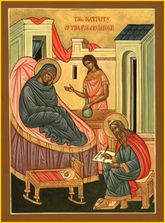 Some days in the Church calendar give me pause. I don’t know about you, but the meanings of all our solemnities, feasts, and memorials aren’t always clear. It’s hard enough to understand the holy days of obligation, let alone all the non-required celebrations. Some days the logic of the Church is clear, but on others, when I look at the upcoming feasts, I stop to wonder what the heck the Church was thinking. Yesterday’s celebration – The Nativity of John the Baptist – has always been curious to me. Admittedly, I’m too literal. In most questions of faith, that is my problem from the outset. I see what’s on the surface – the name, date, or historical information – and am blind to the depth of what is revealed below the surface. Often, my faith needs help. It needs a rock tumbler of sorts. You know those machines that take ordinary rocks and spin them around until their edges are smooth and their inner colors radiant? They turn the plainest rocks into gems. Growing up, a kid in your neighborhood probably had one, and, if you were as nerdy as me, you thought it was pretty cool. Sometimes, like with the Solemnity of the Nativity of John the Baptist (and other churchy sounding things), I need a rock tumbler for faith. Luckily, I have one. Let me walk you through how it works. At first, I hear something about the Church (teaching, feast day, tradition, ritual, etc.) and think “that’s weird, why do we do that?” Then my literal brain tries to explain it. Example: when I think of John the Baptist’s birth (JB for short), it doesn’t strike me as his most shining moment. Yes, it’s biblical and had some impressive in utero gymnastics and marital muteness (what wife doesn’t wish her husband speechless every so often, right?). But, at the same time, JB’s birth plays second fiddle to his ministry, to his baptizing. We don’t call JB “the Baptist” by mistake. JB’s ministry makes it into all four gospels, his death in three, but in only one gospel (Luke) do we hear of his birth. The faith tumbler is usually loud at first and produces few obvious results, as you can see. Generally, when this tumbling process begins it doesn’t cue me in that it’s started. Rather, I mistake the noise of the faith tumbler for my own frustration and keep searching for some literal satisfaction. After my biblical strikeout, I dive headfirst into history. The fact that we don’t actually know JB’s birthdate doesn’t surprise me, but when I start finding evidence that Luke’s account of JB’s birth is more likely a construction of scriptural allusions (not illusions) than it is historical fact, my mind starts spinning even more. Thank God, after long enough, my frustration mounts and I give up. I let go. I get frustrated with the Church and wonder: Why they don’t they just stick to Jesus and forget all these other nonessential feasts? They’re unneeded, a historical (some, not all), and it’s just mixing up the Gospel message… That’s when it hits me. The sharp edges of my literalness soften. The walls of my attitude give way. The roughhewn rock of my faith vanishes and its inner colors come forth. I see what was there from the very beginning and what will be there until the end of time. The Solemnity of the Nativity of John the Baptist is not just about John the Baptist; it isn’t just about history or allusion or mistaken priority either. It’s about today and it’s about Jesus’ coming. It’s about us and the fulfillment of the kingdom now. Did you hear that beep? That was the faith tumbler. Its cycle is finished and I’m lucky for it. Mark Bartholet is the Pastoral Associate for Faith Formation at St. Peter Catholic Church in Charlotte, NC.
“…we even boast of our afflictions, knowing that affliction produces endurance, and endurance, proven character, and proven character, hope, and hope does not disappoint, because the love of God has been poured out into our hearts through the Holy Spirit that has been given to us.” ~Romans 5:3-5
A few weeks ago, during our celebration of the Solemnity of the Most Holy Trinity, this portion of St. Paul’s letter to the Romans was read to faithful Catholics throughout the world. I had the privilege of attending a bilingual Mass that weekend with my girlfriend, Kara, in a high school gymnasium. The different setting, unfamiliar language, and unusually large number of altar servers hardly crossed my mind as we participated in Mass at Most Holy Trinity Parish, on this, their solemnity. It was a beautiful liturgy to say the least! What struck Kara and me most about our experience, however, were these lines from the second reading: How many of us know someone who is afflicted? We all have family members, friends or colleagues that are struggling with cancer, unemployment, depression, etc. In the daily news - local, national and international - we hear about gun violence, war, natural disaster, and famine. Even more simplistically, we each have ‘good days’ and ‘bad days.’ St. Paul reminds us that affliction is not something to run from because ultimately, we “boast in hope of the Glory of God” (Romans 5:2). His ‘flow chart of hope’ is a reassuring message of what true faithfulness yields and how God makes His love present to each of us in our struggles. The alternatives to hope (sin, despair, discouragement, impatience, fear, anxiety, guilt…)_ when left unchecked, are a rejection of God’s invitation to deeper communion with Him. Very basically, this reading offers us a roadmap to understand how affliction does not have the final word; hope does! Pope Benedict XVI’s homily at Nationals Stadium during his 2008 Apostolic Visit to the United States speaks to this point: “It is a prayer of unfailing hope, but also one of patient endurance and, often, accompanied by suffering for the truth. Through this prayer, we share in the mystery of Christ’s own weakness and suffering, while trusting firmly in the victory of his Cross.” We are able to endure our own afflictions because of the hope promised to us by God. Pain, suffering, and struggle are not pleasant, especially when they are affecting someone we know and love. As people of faith, though, we believe God is with us, united in our affliction and made present to us in the love we experience. This faith, this hope, and this love, offer us momentary comfort and strength as we journey to the ultimate glory of complete communion with God. We have a common call to share this hope with those around us, especially with those who find it difficult to endure in times of struggle. This simple reminder of the universality of the Church also reminds us that through prayer, “we become capable of the great hope, and thus we become ministers of hope for others” (Spe Salvi, 34). And so, as we are confronted with affliction, our prayer should be one of hope. As others struggle with affliction, our response should be one of hope. And as we begin to question why affliction affects our lives, we must remember that affliction yields hope; hope in the love of God. “Hope, O my soul, hope. You know neither the day nor the hour. Watch carefully, for everything passes quickly, even though your impatience makes doubtful what is certain, and turns a very short time into a long one. Dream that the more you struggle, the more you prove the love that you bear your God, and the more you will rejoice one day with your Beloved, in a happiness and rapture that can never end.” St. Teresa of Avila, The Exclamations of the Soul to God, 15:3. Jonathan Jerome is the Director of Catholic Campus Ministry at the University of Pittsburgh Johnstown. Standing between the ornate choir and high altar of Toledo’s medieval cathedral is the statue of La Virgen Blanca, one of my favorite depictions of the Blessed Mother. As Mary cradles Jesus in her arms, as if presenting him to us, Jesus’ hand affectionately clasps the chin of his loving mother. In this tender moment Mary’s face expresses an infectious joy, a joy that is quite appropriate for today’s Solemnity in which the Church celebrates Mary as the Mother of God. As we come to the end of the Christmas Octave and usher in the New Year, may we be filled with the everlasting joy that Christ alone can bring. Let us make Mary’s joy our own!
"My soul proclaims the greatness of the Lord, my spirit rejoices in God my Savior for he has looked with favor on his lowly servant. From this day all generations will call me blessed: the Almighty has done great things for me, and holy is his Name. He has mercy on those who fear him in every generation. He has shown the strength of his arm, he has scattered the proud in their conceit. He has cast down the mighty from their thrones, and has lifted up the lowly. He has filled the hungry with good things, and the rich he has sent away empty. He has come to the help of his servant Israel for he has remembered his promise of mercy, the promise he made to our fathers, to Abraham and his children forever." -Luke 1:46-55 Brett Garland is the Program Development Coordinator for the Catholic Apostolate Center. Today is the Solemnity of the Immaculate Conception, a great feast day for the Church in the United States. Buona festa!
At first glance, many might think we’re celebrating Jesus’ conception, but that’s the Feast of the Annunciation on March 25th, nine months before Christmas. Today is actually a great Marian feast – commemorating that Mary, Mother of the Savior, was, as Blessed Pius XI procliamed “from the first moment of her conception, by a singular grace and privilege of almighty God and by virtue of the merits of Jesus Christ, Savior of the human race, preserved immune from all stain of original sin” (Pius IX, Ineffabilis Deus). We celebrate her birth nine months later on September 8th. This is a great American feast day because from the beginnings of the Catholic Church in America, Bishop John Carroll consecrated the United States to the Immaculate Conception in 1792 and the bishops unanimously affirmed her as Patroness of our country in 1846. Blessed Pius XI approved their choice and eight years later declared as infallible the dogma of the Immaculate Conception. Less than a century later, the largest Catholic Church in the United States was dedicated to the Immaculate Conception. When I was a freshman in college, some upperclassmen friends from the Catholic Student Center took me to this church, the Basilica of the National Shrine of the Immaculate Conception, for the first time on December 8th. I was in awe! The church represents the United States well – just like our nation it is a melting pot of various ethnic shrines from around the world honoring Mary under various titles and most of all the title Immaculate Conception. Advent has just started (we’re only a week in), and on the path to Christmas this feast reminds us of the plan God has for us and His infinite love. As the Catechism states, “the Father blessed Mary more than any other created person ‘in Christ with every spiritual blessing in the heavenly places’ and chose her ‘in Christ before the foundation of the world, to be holy and blameless before him in love’” (CCC 492). Through this feast day, as always, Mary leads us to Jesus – calling us to prepare our hearts for Him. As the prime example of motherhood, Mary is the first to believe in her son, and she encourages him in his first public ministry at the wedding feast of Cana. As we prepare the way of the Lord this Advent we should listen to Mary’s words to the wedding servants: “Do whatever he tells you.” As is etched in the stone walls of the Miraculous Medal Shrine at the National Shrine: “O Mary, conceived without sin, pray for us who have recourse to thee.” Nick Wagman is the Project Management & IT Coordinator for the Catholic Apostolate Center. As a Catholic school student in the fifth grade, I learned about the “cult of the saints.” I remember being extremely confused at the time, as I had no idea what the phrase meant, and I don’t think it was ever actually explained to us. In preparation for All Saints Day, we were tasked with choosing a saint and writing an essay about them. After wide consultation amongst family members, I chose St. Jude Thaddeus, the patron saint of hopeless cases. Perhaps this was my family’s way of saying that I was a hopeless case at the age of 10, but I digress.
A dozen or so of us lucky students who wrote superb essays were chosen not only to present our essays in front of the classroom, but also to dress up like our sainted friend and read the essay at the conclusion of All Saints Day Mass at the parish church. I set off to find out what St. Jude looked like. Flowing robes and lots of green fabric. Without asking my mother to dig out the old photo albums, let’s just say that it happened, and that the experience got me hooked on the “cult of the saints.” Today we celebrate the Solemnity of All Saints. This celebration includes the many saints and blessed “who have gone before us with the sign of faith” (Roman Canon), in addition to both the ordinary and extraordinary who intercede for us daily in Heaven but who have not officially risen to the “dignity of the altar.” These holy women and men serve as examples of how to live, love, and serve the world around us. We are all called to love, and we are all called to be saints. As a priest said during a homily while I was on vacation this summer, “To become a saint isn’t to become a statue. It is to become real.” Through living out the love that Christ showed us on the cross and by emulating those who have gone before us, we all assist in building up the Body of Christ. In Pope Benedict XVI’s homily on All Saints Day in 2006, he said, “Holiness demands a constant effort, but it is possible for everyone because, rather than a human effort, it is first and foremost a gift of God, thrice Holy.” If holiness is a gift from God – Father, Son, and Holy Spirit – it is our responsibility to strive for holiness in order to be, as the priest prays during the Roman Canon, “counted among the flock of those [God] has chosen.” As an Anglophile and lover of English hymnody, I leave you with this. Enjoy, and blessed Solemnity of All Saints! Alex R. Boucher is the Program & Operations Coordinator for the Catholic Apostolate Center. Follow Alex on Twitter at @AlexBoucher. |
Details
Archives
April 2024
Categories
All
|
About |
Media |
© COPYRIGHT 2024 | ALL RIGHTS RESERVED

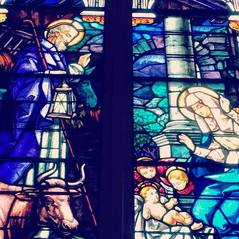
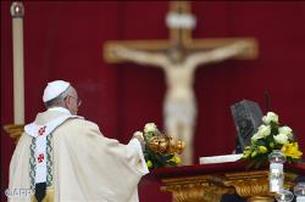
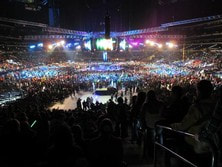
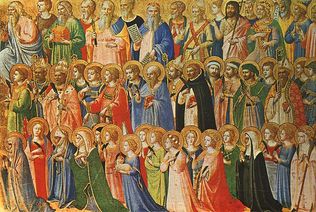
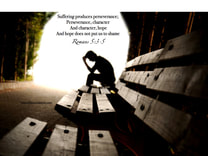
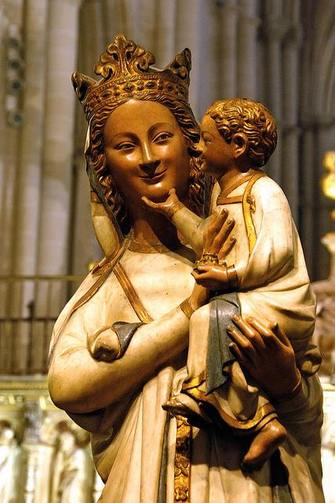

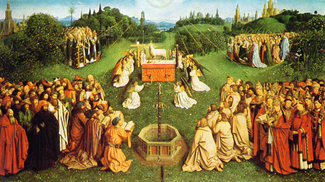
 RSS Feed
RSS Feed